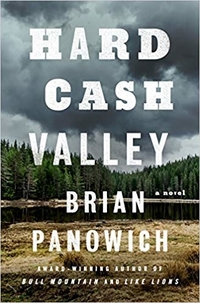The Body Politic by Brian Platzer
 Friday, May 15, 2020 at 6:10AM
Friday, May 15, 2020 at 6:10AM 
Published by Atria Books on March 3, 2020
The Body Politic is more about the body than politics, although a key character works for John Edwards and Hillary Clinton before joining the Trump administration. The two primary characters, Tess and David, each have health issues that are scrambling their lives and testing their marriage. David’s problems began when he fell from a height. Since then he has dealt with dizziness, headaches, blurred vision, nausea, and other problems that are amplified when he does anything more strenuous than sleeping. The problems are likely neurological but no doctor has made a definitive diagnosis or provided an effective treatment, so David has tried every alternative he can find, from herbal remedies to meditation.
Tess was physically healthy until she became depressed and, like David, started spending all day in bed, rendering both David and Tess ineffective parents of their two children. Tess is determined to stay with David and help him recover. He is devoted to her despite her infidelity. Tess has a distressing personal history that includes the violent death of her mother at the hands of her father when she was young. She has been disturbed by her memories of her mother’s murder but begins to question the accuracy of those memories when she reconnects with her father after years of estrangement.
The side-switching political consultant, Tazio, is David’s best friend, although he is also close to Tess and to another mutual friend named Angelica. By the novel’s end, having praised Trump lavishly on Fox News, he’s scored a job in the Trump administration, perhaps with the intention of influencing its policies as an infiltrator from the left. By the novel’s end, however, it is unclear whether Tazio has any political philosophy or just enjoys being recognized.
The story is driven largely by David’s medical issues and Tess’s struggle to cope with David’s infirmity, her own depression, her feelings about Tazio, and her potentially unreliable memories about her childhood trauma. Eventual confrontations with Tess’s father and his new wife add to the domestic drama. While the novel has all the ingredients of a soap opera, it avoids sensationalism and the tear-jerking moments that often make domestic dramas unendurable. In fact, when Tess has an epiphany during a confrontation with David that redefines her understanding of their marriage, it is a moment of sheer and brutal honesty, the kind that most domestic stories try without success to achieve.
Abused women give the plot a unifying theme. Tess, her mother, Angelica, and the current wife of Tess’s father have all experienced harm, directly or indirectly, that was inflicted by men. Yet at this point, while Tess’s father clearly has an anger management problem, he seems to control his urges to be physically violent. Whether his wife and children should stay with him is a question that — to the author’s credit — encourages subtle analysis rather than knee-jerk reactions.
There are moments when it seems as if David is taking advantage of Tess by not pulling his weight in their marriage, a failing that could arguably be a form of psychological abuse, but it seems clear that David is doing his best to cope with a disease that is real despite the medical industry’s inability to give it a name. Brian Platzer builds sympathy for David slowly as the novel progresses. The depression from which Tess suffers is just as real and her struggle to fight against it also earns the reader’s respect. Equally compelling is her struggle to come to terms with her past and to deal responsibly with her feelings about her father and Tazio. Finding the strength to move on is closely related to the theme of abuse.
Dealing with pain is another theme. David is a good guy, but there is a difference between enduring pain and making a point of enduring pain. One of his healers eventually helps him understand that “constantly confronting everyone with his pain didn’t make him feel better, and it disturbed other people.” Sometimes it’s better to suffer in silence. The healer also suggests, albeit belatedly, that David should approach each day with the assumption that he will be in constant pain and take joy in the moments when he is not. That’s a gloomy way to live, but less gloomy than wallowing in misery.
None of the issues that Platzer explores have easy answers, nor does Platzer offer any. I admire that. People who crave easy answers are easy prey for the charlatans who peddle simplistic solutions to complex problems. People who spend their lives as self-defined victims create self-imposed barriers to happiness. Finding a way forward is often a process of trial and error. No single solution works for everyone, regardless of what spiritual advisors and social workers and snake oil salesmen tell us. The novel illustrates that point in many ways.
The Body Politic is a bit scattered and unfocused, as if it’s not quite sure whether it wants to be about Tess and David or Tess and her father or Tazio and Trump. Tazio drifts in and out, as if Platzer was uncertain of his role in the novel. But if the narrative moves in many different directions, that’s a reflection of life. The characters have unresolved issues and maybe those issues will never be resolved, but the novel reminds us that we need to make as much progress as we can, even if the path forward is unmarked.
RECOMMENDED



